Everyone loves logos*. A quick search online demonstrates that educators love them too – the TES website alone offers over two thousand downloadable resources on the topic of logo design. And when examining a random sample of these, we see some key features many share: a design brief, a few examples of logos, and 4-5 bullet points of what makes a good logo.
There are many complex concepts involved in understanding and creating successful graphic symbols. Can we really expect students to get on with such a challenging task without a little more support? My years of experience making concepts such as these easier to grasp have taught me that it is rarely enough to tell students what makes good design: clearly listing the design principles of a successful logo is no guarantee that students will actually know how to achieve these goals in their own creations.
Instead, I suggest we build a clearly paced narrative. Firstly, illustrate what we want our students to understand using engaging visual context and inspiration. Next offer opportunities to practise and build a small set of relevant skills, and only then challenge them to use their newly acquired knowledge, understanding & skills to produce successful responses to a brief.
Let’s take principal number one of a good logo: IT IS SIMPLE AND EASY TO UNDERSTAND. Easily said than done, right? We are exposed to a constant flow of visual stimuli, surrounded by subliminal messages that More is Better. We rarely exist in a silent, empty space. It is no wonder then that students are naturally inclined to pile on detail in their design work. Creating concise and accurate symbols is a competency we need to help them develop. Here are some ideas how:
BEFORE MOVING TO LOGOS, LOOK AT SYMBOLS:
 This symbol representing a person is universal; it is understood by people of all shapes, colours and attire not because it looks like them, but because it clearly represents a human form.
This symbol representing a person is universal; it is understood by people of all shapes, colours and attire not because it looks like them, but because it clearly represents a human form.
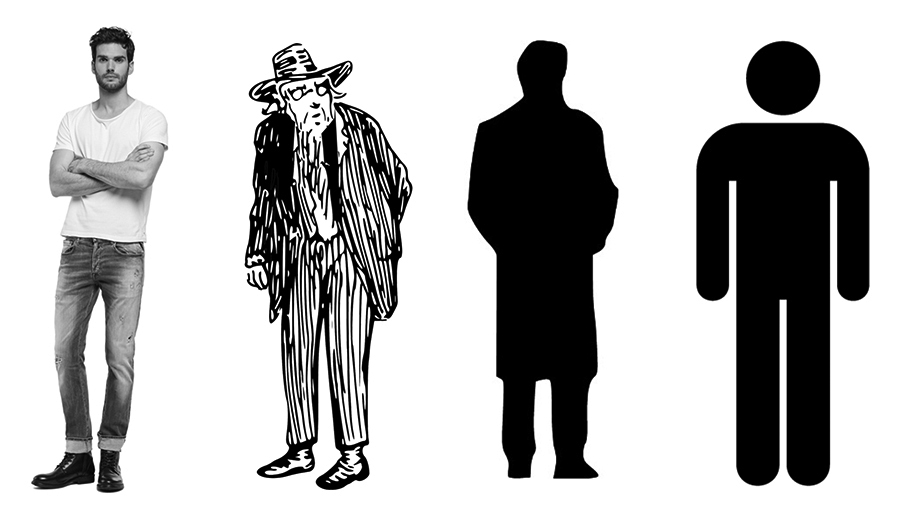
The lack of detail – in comparison with a photograph, a drawing, even a silhouette – is what allows the symbol to become a generic representation of something.

But this generic representation is not always of a concrete ‘thing’. The Biohazard symbol was designed to be learned to represent what it stands for, rather than depict a specific recognisable thing. “We wanted something that was memorable but meaningless, so we could educate people as to what it means.” Charles Baldwin, Engineer and co-creator of the Biohazard symbol, 1966
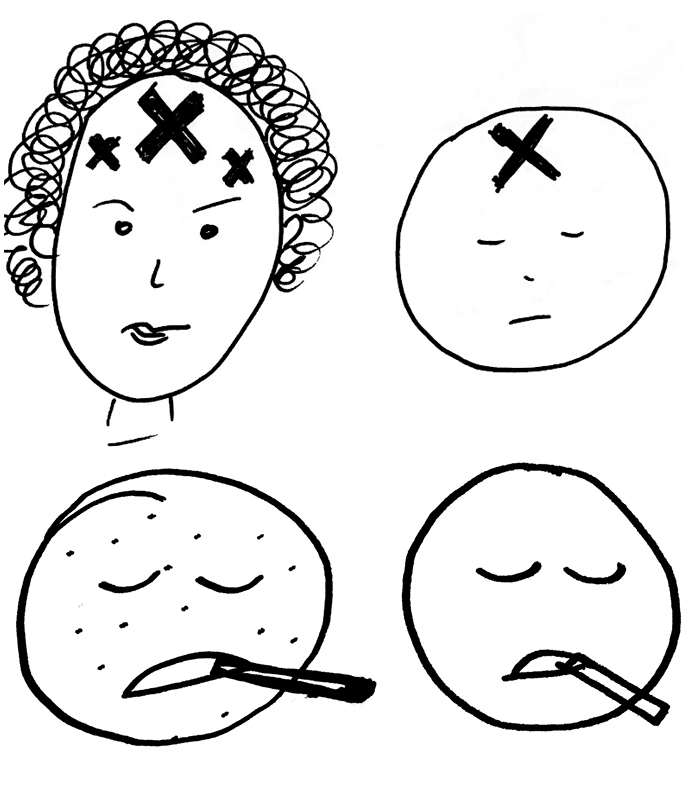
PLAY A GAME OF PICTIONARY: By attempting to communicate a word non-verbally, using only drawings, we are already undergoing a process of simplification in our heads. Through trial and error we learn that often detail can be distracting – is it really necessary to draw a curly head of hair to illustrate ‘headache’ or pox on a face when communicating ‘sick’?
HAVE A GO AT SIMPLIFYING: As we said, successful symbols are a simplification of a complex form. This is because they need to be immediately recognisable, legible even in small size and must not depend on colour for clarity.
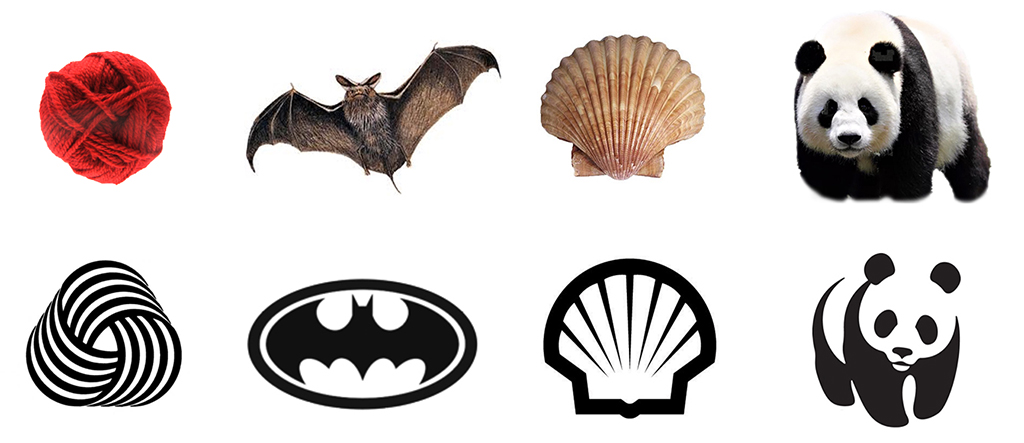
With black markers, students can simplify line drawings they’ve made – for example in the Pictionary activity – using solid areas effectively to create a concise and coherent form..
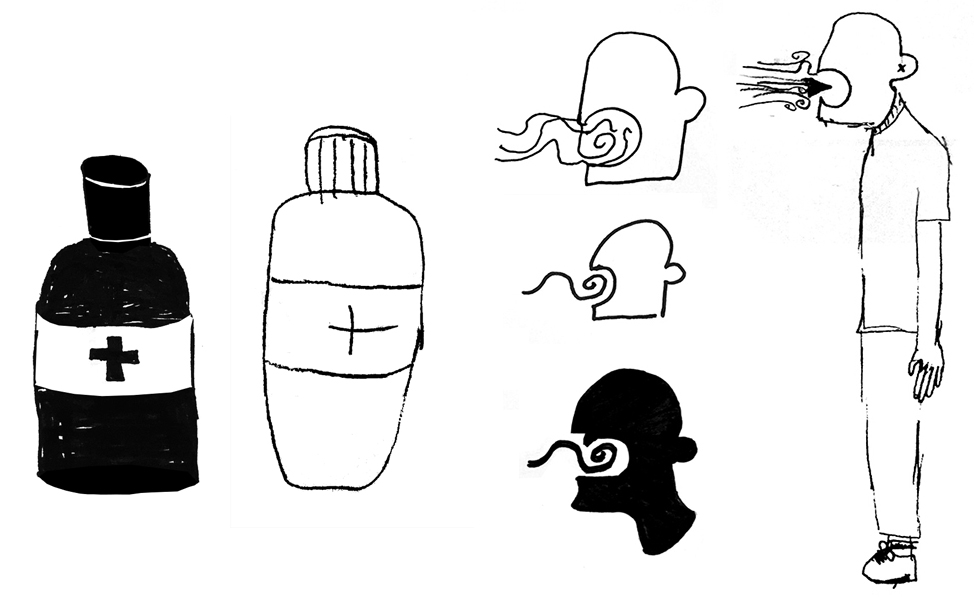

Another good way to understand and practise simplification is to work with black paper and scissors, a technique that ‘forces’ students to simplify as they decide what detail is essential to make an image recognisable. They also learn how powerful the use of white can be.
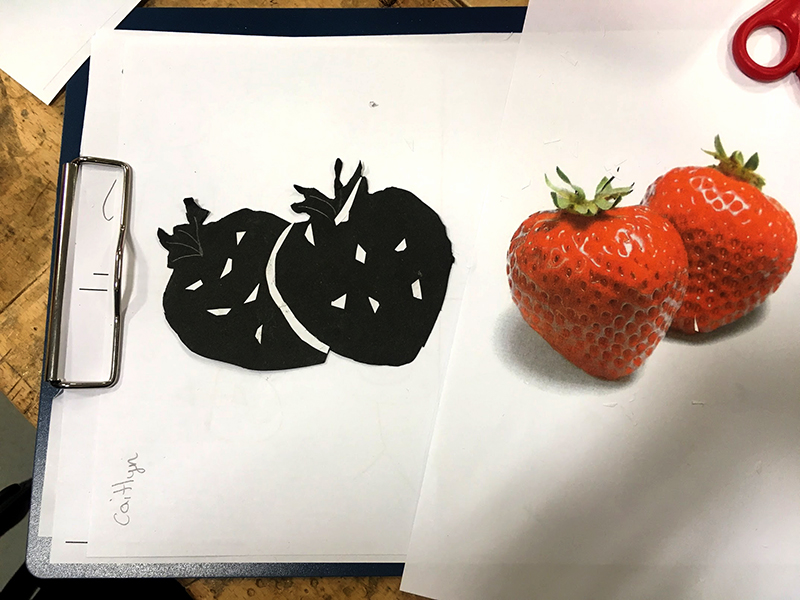
At a more advanced level, students can experiment with negative and positive and how to use negative space to create engaging designs.
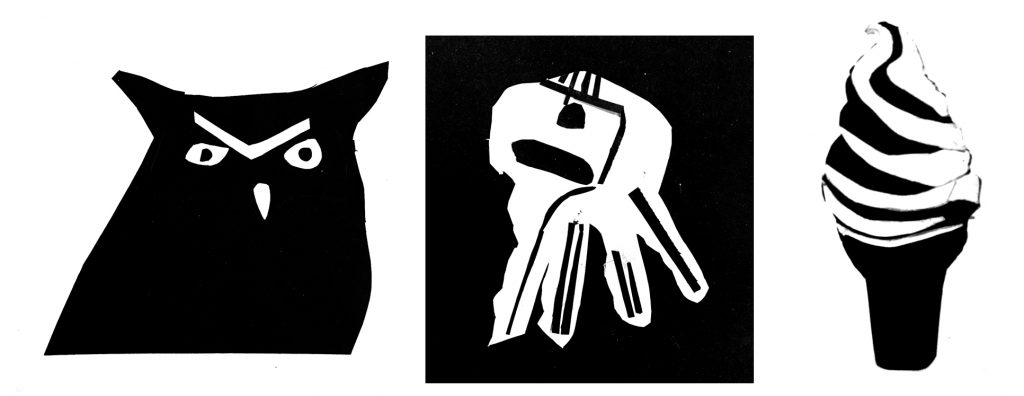
With this set of tools in their hands students are now ready to tackle one of those two thousand design briefs out there (and they learned something along the way too).
*In this post I intermittently use the terms ‘logo’ and ‘symbol’ to describe a graphic emblem designed to visually represent something. There are many pedantic voices in the design community who will frown upon this, so if you want to know more, this is a good piece on the semantics of the word Logo.
